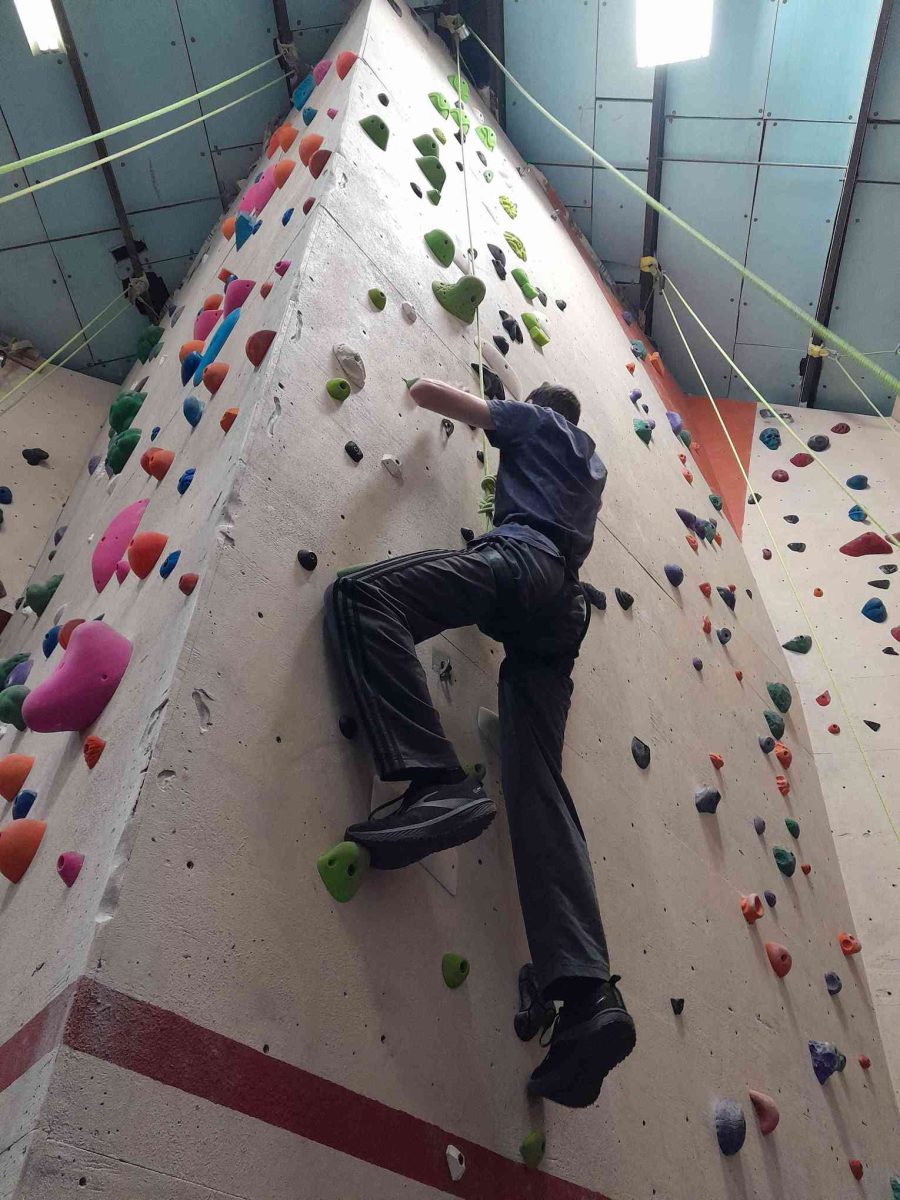Rock climbing is a sensational activity combining strength and problem-solving. The challenge of ascending a wall and the adrenaline of suspending yourself above the ground make this activity healthy and enjoyable. Rock climbing, as the name suggests, involves scaling surfaces like cliff faces. These could be actual rocks and cliffs, but a rock gym is more suitable for beginners to learn the technique and to become stronger.
The Doylestown Rock Gym (DRG) offers many styles of climbing walls so that beginners and experts alike can hone their skills, as well as experienced staff and instructors to give pointers and even lessons. Andrew, who works at DRG, noted that the gym offers a more controlled climbing experience than outdoor climbing, which is more suitable for beginners. All you need regarding safety equipment is a harness available at the gym. Andrew has been climbing since 2006. He fondly remembers when he and another friend drove to Wyoming and climbed Devil’s Tower, a butte standing 500 feet tall.
There are a variety of styles of rock climbing, many of which can be practiced at DRG. These include bouldering, belaying, crack climbing, and outdoor climbing. Each of these styles requires different techniques and different equipment to execute safely. Bouldering does not require a rope and harness. This is because it is done at a safe height where falling is not as dangerous as a purely vertical climb. At DRG, bouldering can be done in color-coded routes, which feature a start and finish. When completing a route, the climber should only use rocks of a specific color. Each route is also given a relative rating using the V-scale, which designates difficulty using “V#,” where V0 is the easiest and increasing numbers are proportionately complex up to V17. Simple bouldering walls serve as a good warm-up and starting point when learning how to climb, while more involved routes are inherent puzzles, requiring more technique, strength, and intellect to complete. Belaying is a more vertical climb that requires a rope and harness for safety. This form of climbing has the added thrill of being far above the ground. Similar to bouldering, DRG offers routes of varying difficulty for honing one’s belaying technique. The verticality arguably makes it far more arduous to execute, as the climber directly opposes gravity while ascending.
Mike, a regular at DRG for the past six years, observed the benefits and fun of climbing, “The physical side is like strength training. I really enjoy the puzzle side of it; that, for me, is why I’ve stuck with it so long.” Some may be concerned about an initial lack of strength while beginning, but Mike insists, “Technique is underrated. Physical strength is important, but you can get around strength by knowing techniques.” Andrew also highlights the beginning process. “The most important thing is safety skills. If you’re bouldering, you’re going to fall, and you’re going to fall a lot. One benefit I’ve seen from classes is that people get introduced to other beginners. It’s a great way for people to meet other people.”
Sources:
https://en.wikipedia.org/wiki/History_of_rock_climbing
https://doylestownrockgym.com/gym-info/gym-rates-membership/
https://www.nationalgeographic.com/history/article/rock-climbing





